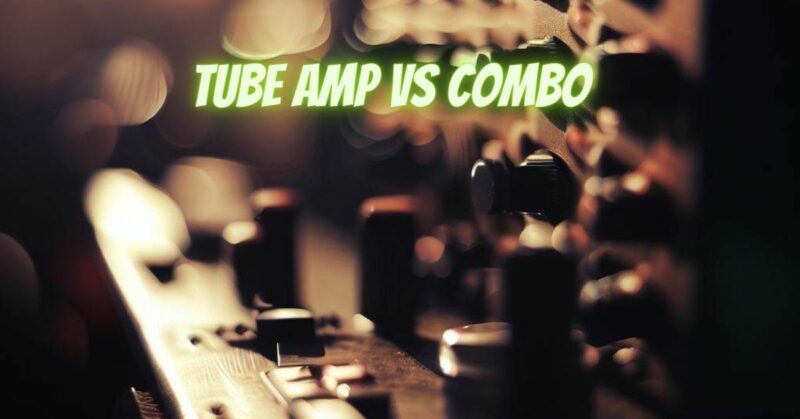When it comes to audio amplification, there are various options available, each with its unique characteristics and applications. Two popular choices are tube amplifiers and combo amplifiers. In this article, we will explore the differences between tube amps and combo amps, their strengths, and how to choose the right option based on your audio needs and preferences.
Tube Amps:
Tube amplifiers, also known as valve amplifiers, use vacuum tubes to amplify audio signals. They are renowned for their warm and musical sound signature, with harmonic distortion that many audiophiles find appealing. Tube amps often have a vintage appeal and are favored for genres such as jazz, blues, and classic rock.
Pros of Tube Amps:
- Warm and Musical Sound: Tube amps introduce harmonic distortion that adds warmth and richness to the audio, creating a smooth and natural sound reproduction.
- Dynamic Range: Tube amps handle dynamic peaks gracefully, providing a more organic and dynamic listening experience.
- Vintage Charm: The sight of glowing vacuum tubes and the tactile experience of using a tube amp evoke a sense of nostalgia and appreciation for classic audio equipment.
Cons of Tube Amps:
- Cost: Tube amps can be more expensive than solid-state or digital amplifiers due to the cost of vacuum tubes and the intricate design.
- Maintenance: Vacuum tubes have a limited lifespan and may require occasional replacement, increasing long-term maintenance costs.
Combo Amps:
Combo amplifiers are integrated units that combine an amplifier and speaker(s) in a single enclosure. They are popular choices for guitar amplifiers and some audio systems, offering convenience and a compact design.
Pros of Combo Amps:
- All-in-One Solution: Combo amps provide an all-in-one solution with an integrated amplifier and speaker(s), eliminating the need for separate components.
- Portability: Combo amps are generally more portable and easier to transport compared to separate amplifier and speaker setups.
- Cost-Effective: Combo amps can be a cost-effective option, as they combine multiple components into a single package.
Cons of Combo Amps:
- Limited Customization: Combo amps may have limited options for customization compared to separate amplifier and speaker setups.
- Speaker Matching: Some combo amps may not offer the flexibility of matching different amplifiers with specific speakers, potentially affecting sound quality.
Choosing the Right Option:
When deciding between a tube amp and a combo amp, consider the following factors:
- Sound Preference: If you prefer a warm and musical sound with vintage appeal, a tube amp may be the better choice. If you seek accuracy and efficiency, a solid-state combo amp could be more suitable.
- Audio Application: Tube amps are popular for high-fidelity stereo systems and guitar amplifiers, while combo amps are commonly used in guitar amplification and compact audio setups.
- Budget and Portability: Consider your budget and the portability requirements. Tube amps may be more expensive and heavier, while combo amps offer a more budget-friendly and portable solution.
Both tube amps and combo amps have their unique strengths and applications. Tube amps provide a warm and musical sound with vintage charm, while combo amps offer an all-in-one solution with portability and cost-effectiveness. Choosing the right option depends on your sound preference, audio application, budget, and portability needs. Whether you opt for the classic appeal of tube amplifiers or the practicality of combo amps, both options can deliver exceptional audio experiences to suit your preferences and listening requirements.


